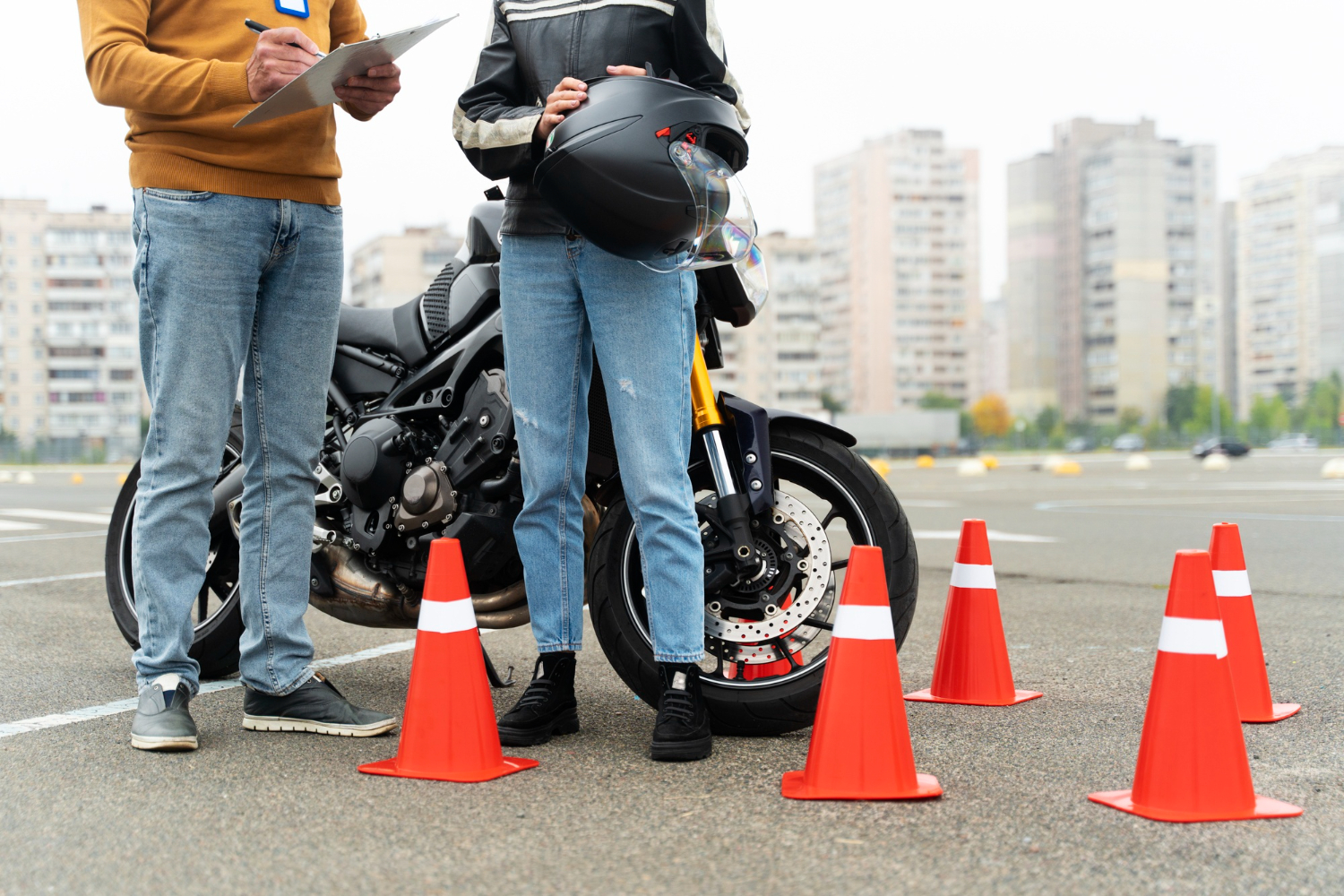Failing your motorcycle test can hit hard. You might feel disappointed, embarrassed or even question if riding is right for you. It’s completely normal to feel a dip in confidence after a setback like this. But it doesn’t mean the end of the road. Every rider has faced tough moments, and most have had to retake a test or two before getting their licence. What matters most is what you do next.
Building your confidence back up after failing is all about recognising that setbacks are part of learning. There’s no shame in trying again. Mistakes are actually one of the best ways to improve your skills. With the right mindset, tools and a bit of help where needed, you can return stronger, more prepared and ready to pass your next test.
Understanding The Setback
The first step to moving forward is figuring out what actually went wrong. The more clearly you understand the reasons behind the failed test, the more you can work on those weak spots. It’s not about blaming yourself. It’s about learning from the experience.
Riders typically fail their motorcycle test for a few common reasons:
– Picking up speed too quickly or riding too slowly for the conditions
– Not looking over their shoulder before changing lanes (called a shoulder check)
– Missing basic road signs or disobeying a stop sign
– Struggling with low-speed control or u-turns during the test
Sometimes it comes down to nerves. You might know all the right moves, but the pressure of the test can cause small slips in judgment. That doesn’t mean you don’t have what it takes. It just means the test day didn’t go your way.
Looking at the test as a learning tool can shift your perspective. Think of it like a practice run, one that gave you real feedback under real conditions. The comments from the examiner, even if tough to hear, should become your focus points. Write them down, talk them through with someone if you need, and use that information to shape your next steps. The goal is to turn feedback into progress. That’s how you grow.
Practical Steps To Rebuild Confidence
Once you’ve figured out what tripped you up, you can take action to work through it. Building confidence doesn’t happen overnight, but small and focused changes make a big difference. It helps to give yourself structure rather than just waiting to feel ready again.
Here are a few things you can do to get back on track:
1. Take a motorcycle exam practice test
Find practice sessions that follow the same format as the real one. It creates a less stressful way to understand the flow of the test and spot the areas where you’re slipping up. Keep doing them until it starts to feel natural.
2. Set clear goals
Start with something simple that’s related to your most recent test feedback. Break it down. If slow-speed control was an issue, focus on perfecting that one skill first before moving on. Tick off each skill one at a time instead of trying to handle everything all at once.
3. Review your rides
After a ride, take five minutes to look back at what went right and what didn’t. Write it down or make a quick voice note. You don’t have to overthink it. This helps you spot repeating patterns and track your progress over time in a way that’s real and personal.
4. Be consistent and keep your rides regular
The less time you spend out on the bike, the longer your nerves hang around. Try to practise at least twice a week, even if it’s just a quick loop around quiet streets or a carpark focus session. The more often you do it, the more natural it becomes.
Confidence isn’t built in silence. It grows each time you face your weak spots and take even the smallest steps to improve. Keep it steady, and remember, the road to passing is rarely straight for anyone. What matters is you’re still riding.
Boosting Mental Resilience
While skills can be practised with time and structure, building up mental strength is just as important. If you’ve failed a motorcycle test recently, your mindset can play a big role in how you bounce back. You might be doubting yourself now, but letting that doubt take the lead won’t help when you approach the test again. You’ve got to shift gears mentally too.
Start small. Admit to yourself that nerves played a role. That’s common, and it doesn’t mean you don’t belong on a motorcycle. The pressure of test day can affect even confident riders. Next, learn to spot those moments when self-doubt creeps in. Catching that negative chatter is one step closer to shutting it down.
A few strategies can help you get centred again:
– Focused breathing before each ride or practice test. A few deep breaths help calm racing thoughts. Treat this like part of your warm-up
– Visualise your test going well. Imagine yourself riding calmly through each part of the route. It might feel odd, but it helps settle your brain and shift your mood
– Change your language. Instead of saying, “I stuffed it last time,” try “I’m better prepared now.” Language shapes mindset more than you think
Talking about your experience with someone you trust also helps. That could be another rider or a mentor, someone familiar with motorcycle testing. There’s comfort in hearing that others have walked the same path and come out stronger. That support, even in passing chats, reminds you that you’re not doing this alone.
One rider, for example, shared that after two failed tests, all it took was one supportive message from a riding mate saying “Next one’s yours, don’t sweat it.” That small gesture helped shift their focus from fear to action. Sometimes, a few words stick with you at just the right time.
Mental resilience isn’t about never feeling nervous again. It’s about learning how to ride through the nerves.
Professional Help And Resources
If you’ve worked through practice on your own but still feel stuck, it might be time to bring in some help. There’s absolutely no shame in needing another pair of eyes. A professional trainer can spot patterns you’re missing and offer targeted advice based on what test assessors actually look for.
Structured training can bridge the gap between where you are now and where you need to be. You’ll get sessions tailored around your test feedback. If your last test showed poor cornering control or shaky braking in traffic, an instructor can work with you to correct those problems with step-by-step guidance.
This kind of support isn’t just technical. Trainers understand the nerves, the frustration, and the hard work it takes to keep training after a knock-back. Having that kind of reliable feedback from someone who’s been there makes a massive difference, especially when preparing to retake your test.
Getting the right help also shortens the learning curve. You don’t have to figure everything out alone. Between structured rides, honest feedback, and a bit of encouragement, you’ll likely find your confidence rebuilding without even realising how far you’ve come.
The goal isn’t just to pass the test. It’s to ride with a sense of calm and control every time you take the bike out.
Keep The Wheels Turning
Everyone hits bumps when learning something new, especially something like riding that involves both skill and judgment. Failing your motorcycle test isn’t the end. It’s a stop along the way. What matters is how you respond and what you decide to do next.
Take everything you’ve learnt from your last test, bring in support where needed, and steer your focus onto getting better, not giving up. The work you’re putting in now doesn’t disappear when you walk out of the testing centre. It sticks with you and makes you a better, safer rider on every road you take. Keep moving forward, trust the process, and back yourself. You’ve got this.
Rebuilding your confidence on the bike is just a matter of practice and patience. By dedicating time to consistent learning and staying open to feedback, you make the journey back to success smoother. For a structured way to enhance your skills, consider working a motorcycle exam practice test into your routine. At Stay Upright, we’re here to support your progress every step of the way. Rest assured that with persistence and the right tools, you’ll be back on track and ready to ace your next attempt.



